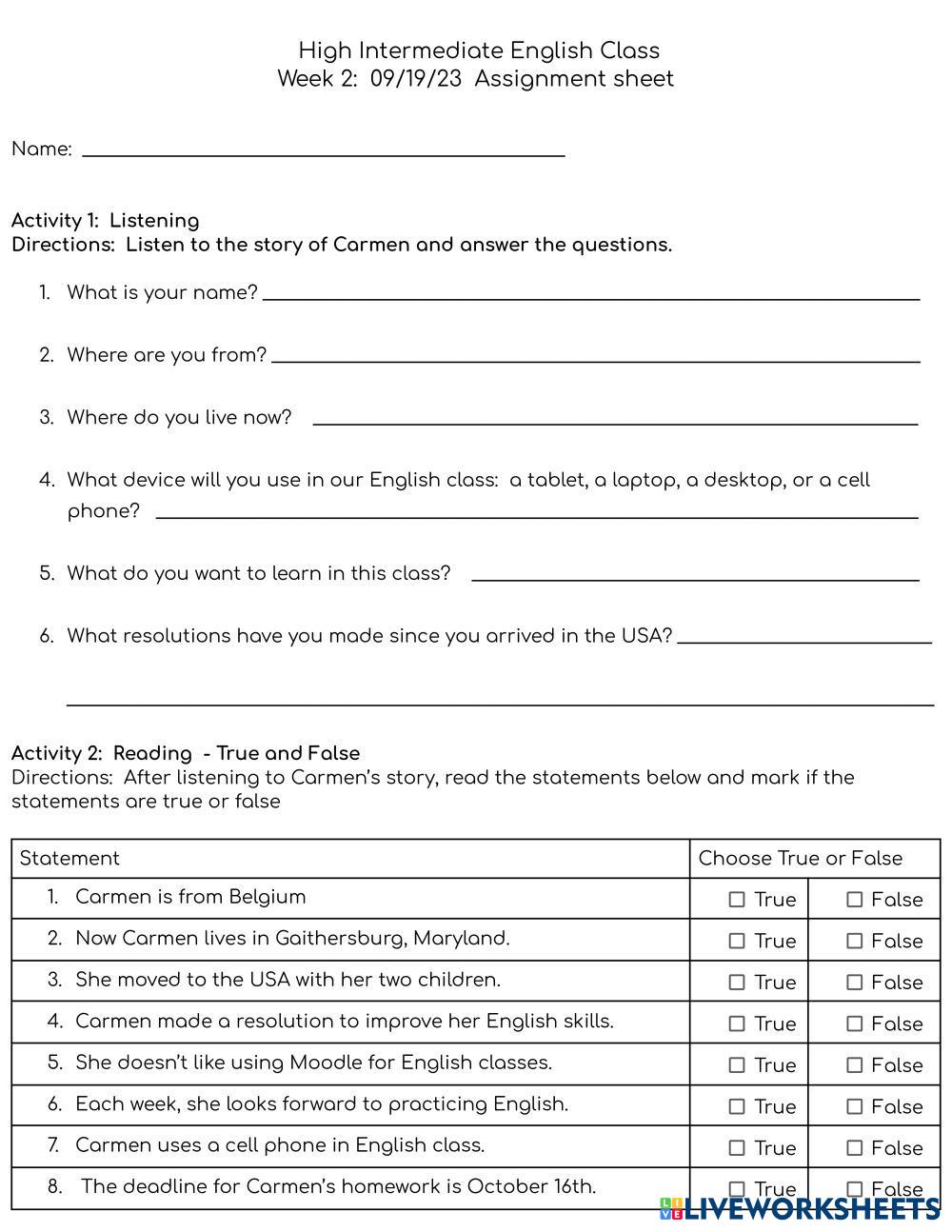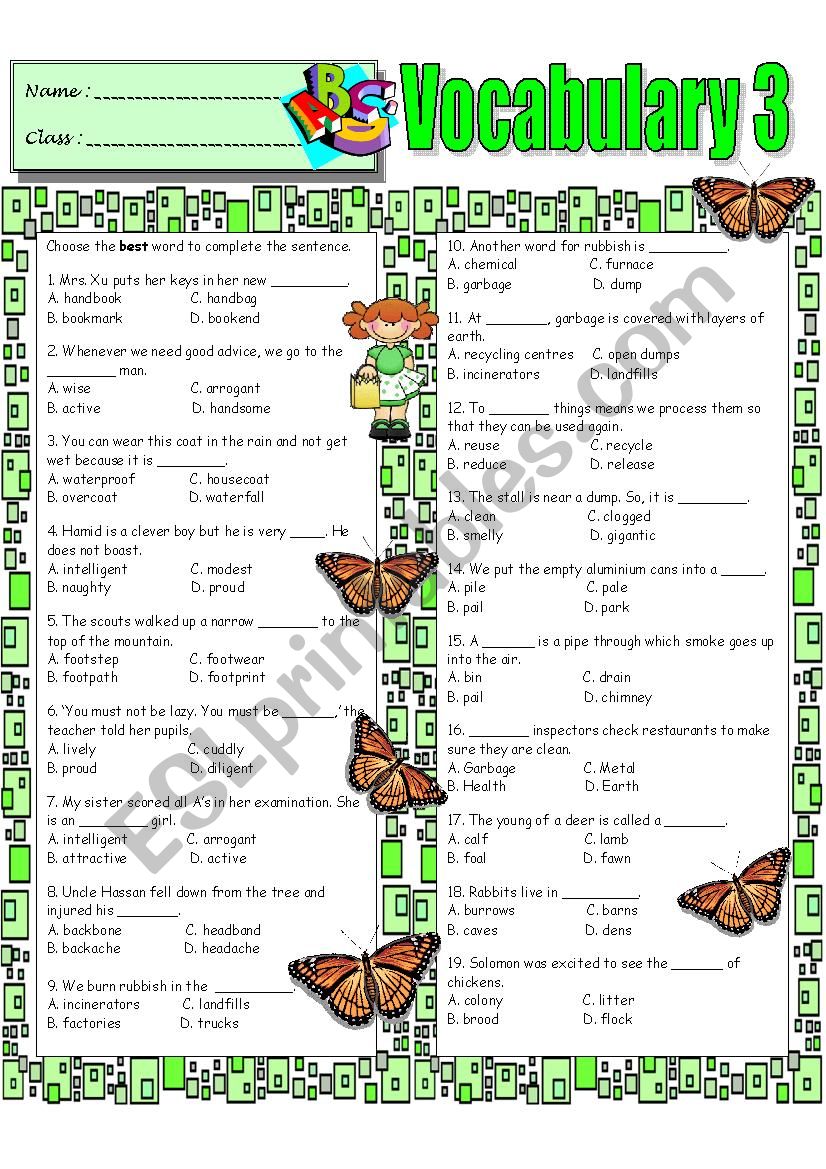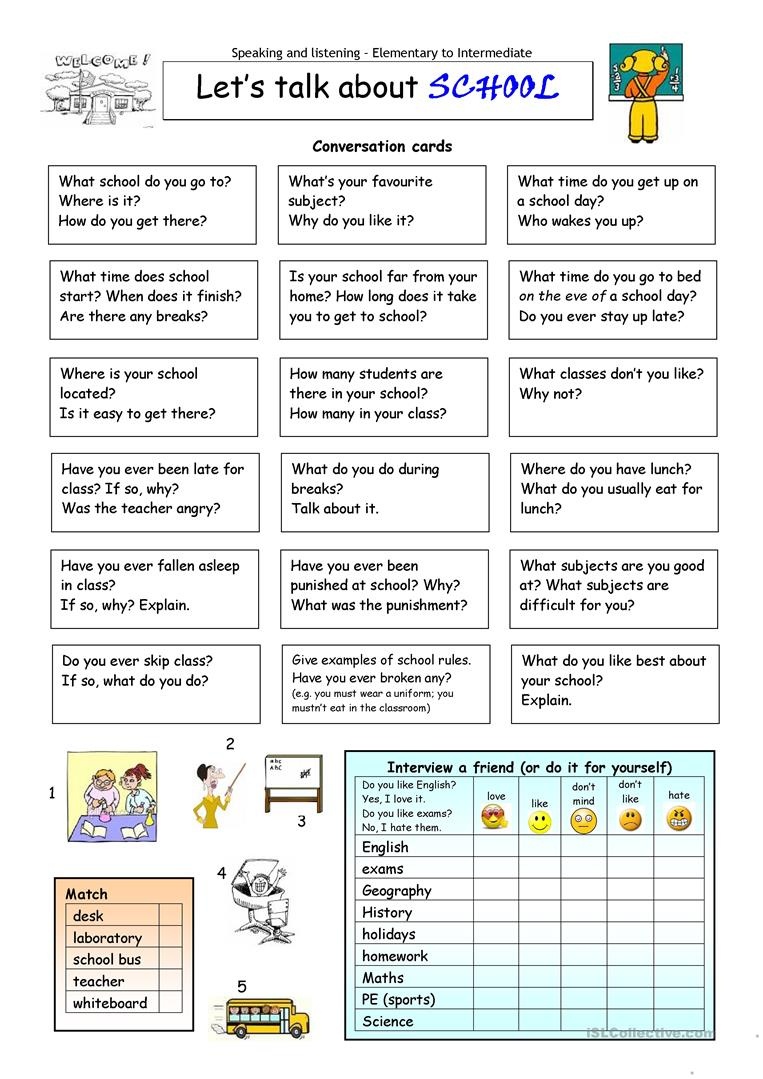
Mastering the Bridge to Fluency: The Indispensable Role of High-Intermediate ESL Worksheets
The journey of mastering English as a second language is a multifaceted one, often characterized by distinct stages of progression. While beginners focus on foundational grammar and basic communication, and advanced learners refine their nuanced expression, the high-intermediate stage stands as a critical bridge. This is where learners move beyond functional communication to true proficiency, grappling with the complexities of idiomatic language, advanced grammatical structures, and sophisticated academic discourse. For learners navigating this crucial phase, the strategic use of high-intermediate ESL worksheets becomes an indispensable tool, offering targeted practice and solidifying the skills needed to ascend to advanced fluency.
Understanding the High-Intermediate Learner

Before delving into the specifics of worksheets, it’s essential to understand the high-intermediate learner. These individuals are no longer struggling with simple present or past tenses. They can hold conversations, understand general ideas in authentic materials, and express themselves on a variety of topics. However, their speech and writing may still contain grammatical inaccuracies, awkward phrasing, or a limited range of vocabulary for expressing complex ideas. They might struggle with:

- Nuance: Distinguishing between synonyms with subtle differences in meaning, understanding sarcasm or implied meaning.
- Accuracy: Consistent application of complex grammar rules (e.g., perfect tenses, conditional types, reported speech nuances).
- Fluency: Hesitation due to searching for the right word or grammatical structure, rather than a lack of basic vocabulary.
- Idiomatic Language: Understanding and correctly using phrasal verbs, idioms, and colloquialisms.
- Academic and Professional English: Shifting register, using formal vocabulary, structuring arguments logically.



The goal for high-intermediate learners is to move from "getting by" to "excelling." They aim to communicate not just understandably, but naturally, accurately, and eloquently, preparing them for academic settings, professional environments, or simply more confident social interaction in English.

Why Worksheets Are Essential at This Stage
In an era of dynamic language apps and immersive experiences, the humble worksheet might seem old-fashioned. However, for the high-intermediate learner, worksheets offer unique and invaluable benefits:

- Targeted Practice: Worksheets allow learners to isolate and practice specific grammar points, vocabulary sets, or skill areas that they find challenging. This focused approach is often more effective than simply consuming general content.
- Reinforcement: They serve as excellent tools for reinforcing concepts introduced in class or through self-study, ensuring that new knowledge sticks.
- Self-Study Potential: Many high-intermediate ESL worksheets come with answer keys, empowering learners to work independently, track their progress, and identify areas needing more attention without constant teacher supervision.
- Structured Learning: They provide a clear, step-by-step approach to mastering complex topics, breaking down overwhelming concepts into manageable tasks.
- Variety of Formats: From fill-in-the-blanks and matching to sentence transformation and open-ended questions, worksheets offer diverse exercises that cater to different learning styles and keep engagement high.


Key Areas Targeted by High-Intermediate ESL Worksheets
High-intermediate ESL worksheets are designed to bridge the gap between functional and fluent English. They delve into advanced grammatical structures, expand sophisticated vocabulary, and hone integrated language skills.
1. Advanced Grammar Focus: Precision and Complexity
At this level, grammar worksheets move beyond basic sentence construction to focus on accuracy, nuance, and the ability to express complex ideas.
- Complex Tenses: Mastery of perfect continuous tenses (e.g., "I had been working," "She will have been studying"), passive voice in various tenses, and understanding the subtle differences between similar tenses.
- Conditional Clauses: Moving beyond simple "if…then" statements to mixed conditionals (e.g., "If I had studied harder, I would be a doctor now") and inverted conditionals (e.g., "Had I known, I would have come").
- Reported Speech: Nuances of reporting questions, commands, and statements with various reporting verbs, paying close attention to tense shifts and pronouns.
- Modals of Speculation and Deduction: Using modals to express certainty, probability, possibility, and impossibility in the past, present, and future (e.g., "He must have left," "She might be coming").
- Subjunctive Mood: Practicing the use of the subjunctive for wishes, recommendations, demands, and hypothetical situations (e.g., "It’s essential that he be here," "I wish I were taller").
- Relative Clauses: Distinguishing between defining and non-defining relative clauses, and using relative adverbs (where, when, why).
- Inversions: Practicing inversions after negative adverbials (e.g., "Never have I seen such a thing," "Not only did he win, but he also broke the record").
- Connectors and Cohesive Devices: Using a wide range of conjunctions, transitional phrases, and adverbs to create logical flow and sophisticated arguments (e.g., "consequently," "furthermore," "nevertheless," "on the other hand").
2. Vocabulary Expansion: Depth and Nuance
Vocabulary worksheets at this stage focus on increasing lexical depth and the ability to use words accurately in context, rather than just knowing definitions.
- Academic Vocabulary: Introduction to common academic words and phrases used in essays, presentations, and formal discussions.
- Collocations: Learning which words naturally go together (e.g., "make a decision" vs. "do a decision"). This is crucial for sounding natural.
- Phrasal Verbs: Understanding the multiple meanings of common phrasal verbs and using them correctly in various contexts.
- Idiomatic Expressions: Exposure to and practice with common English idioms, often through contextualized exercises that help infer meaning.
- Synonyms and Antonyms: Exploring the subtle differences between similar words and the appropriate contexts for their use.
- Register: Differentiating between formal and informal vocabulary and knowing when to use each.
3. Integrated Skills Practice: Real-World Application
Beyond isolated grammar and vocabulary, high-intermediate ESL worksheets are excellent for integrating skills, preparing learners for real-world communication.
- Reading Comprehension: Worksheets based on authentic texts (news articles, short stories, academic excerpts) that require inferencing, identifying author’s purpose, understanding tone, and summarizing complex information.
- Writing Prompts: Guided writing exercises for argumentative essays, opinion pieces, formal letters/emails, summaries, and reports, focusing on structure, coherence, and appropriate language.
- Listening Activities: Worksheets accompanying audio recordings (podcasts, short lectures, interviews) that test understanding of main ideas, specific details, implied meaning, and note-taking skills.
- Speaking Prompts: Discussion questions, role-play scenarios, and debate topics that encourage the use of target grammar and vocabulary in spoken communication, often requiring learners to express opinions, justify arguments, and negotiate meaning.
Characteristics of Effective High-Intermediate ESL Worksheets
Not all worksheets are created equal. Effective high-intermediate ESL worksheets are designed with several key principles in mind:
- Authenticity and Context: The language and scenarios should reflect real-world usage, embedding grammar and vocabulary in meaningful contexts rather than isolated sentences.
- Challenge and Progression: They should be challenging enough to push learners without being overly frustrating. A good worksheet offers a clear progression from guided practice to more independent application.
- Variety of Exercise Types: A mix of multiple-choice, gap-fill, matching, sentence transformation, error correction, and open-ended questions keeps learners engaged and caters to different learning preferences.
- Clear Instructions: Ambiguous instructions can hinder learning. Worksheets should have precise and easy-to-understand directions.
- Relevance: The topics and content should be relevant to the learners’ interests or future goals (e.g., academic, professional, social).
- Promotes Critical Thinking: Beyond rote memorization, effective worksheets encourage learners to analyze, synthesize, and apply their knowledge.
- Answer Keys (for self-study): Essential for independent learners to check their work and understand their mistakes.
Where to Find and Create High-Intermediate ESL Worksheets
A wealth of resources exists for finding quality high-intermediate ESL worksheets:
- Online ESL Platforms: Websites like ESL-Lounge, British Council LearnEnglish, ThoughtCo (formerly About.com ESL), and various university ESL program sites offer free printable worksheets.
- Publisher Resources: Many textbook publishers provide supplementary worksheets online, often tied to specific units or grammar points.
- Teacher-Created Materials: Experienced ESL teachers often develop their own materials tailored to specific student needs, which can sometimes be found on educational sharing platforms.
- Leveraging Authentic Materials: Teachers can adapt authentic materials (news articles, TED Talks transcripts, song lyrics, short stories) into worksheets by creating comprehension questions, vocabulary exercises, or grammar analysis tasks.
For teachers, creating customized worksheets allows for direct alignment with classroom lessons and student challenges. For learners, a proactive approach to finding worksheets that address their specific weaknesses can significantly accelerate progress.
Conclusion
The high-intermediate stage in English language learning is a pivotal moment, demanding focused effort and strategic practice to bridge the gap from functional communication to true proficiency. High-intermediate ESL worksheets are not merely supplementary materials; they are foundational tools that provide the targeted, structured practice necessary for learners to master advanced grammar, expand nuanced vocabulary, and refine integrated language skills. By consistently engaging with well-designed worksheets, learners can solidify their understanding, boost their confidence, and ultimately achieve the naturalness, accuracy, and eloquence that define an advanced English speaker. Embracing these resources is a key step in unlocking the full potential of high-intermediate learners and guiding them confidently towards fluency.
